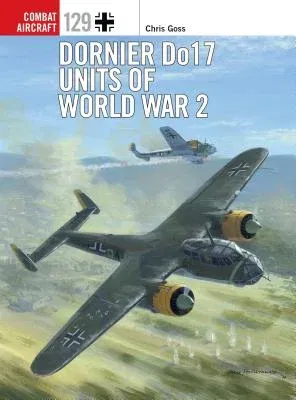Chris Goss
(Author)Dornier Do 17 Units of World War 2Paperback, 17 September 2019

Temporarily out of stock
Free Delivery
Cash on Delivery
15 Days
Free Returns
Secure Checkout

Part of Series
Combat Aircraft
Print Length
96 pages
Language
English
Publisher
Osprey Publishing (UK)
Date Published
17 Sep 2019
ISBN-10
1472829638
ISBN-13
9781472829634
Description
Product Details
Author:
Book Format:
Paperback
Country of Origin:
US
Date Published:
17 September 2019
Dimensions:
24.64 x
18.29 x
0.76 cm
Illustrator:
ISBN-10:
1472829638
ISBN-13:
9781472829634
Language:
English
Location:
New York
Pages:
96
Publisher:
Series:
Weight:
317.51 gm